
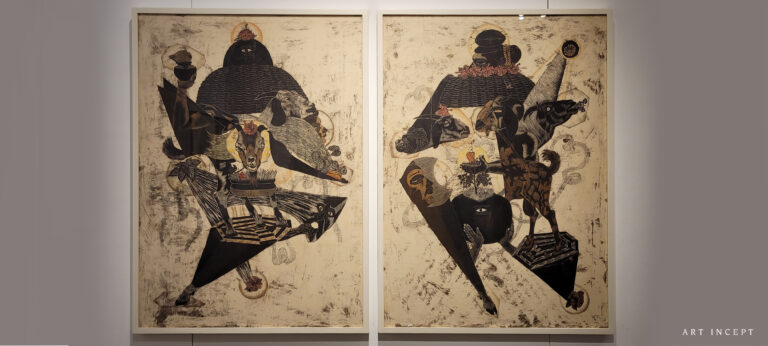
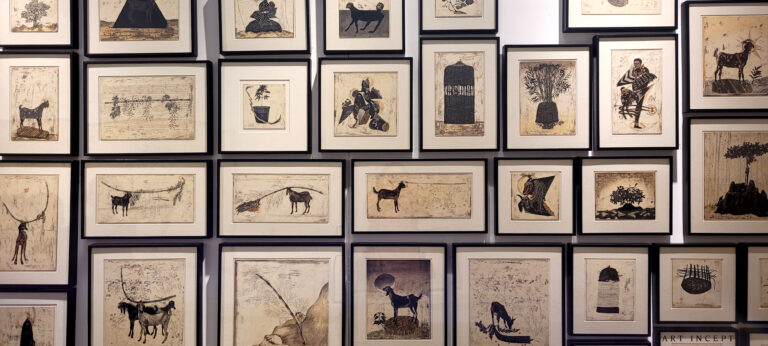

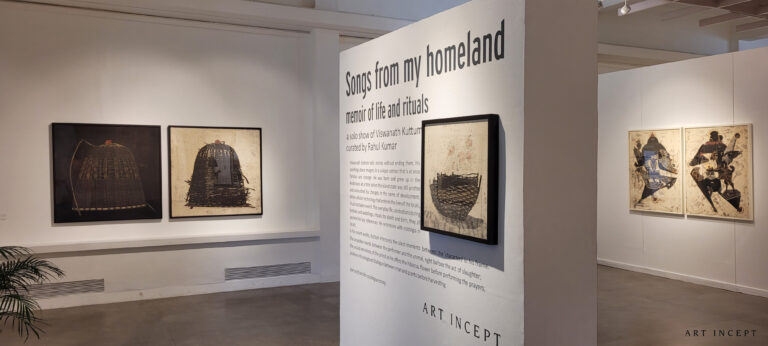

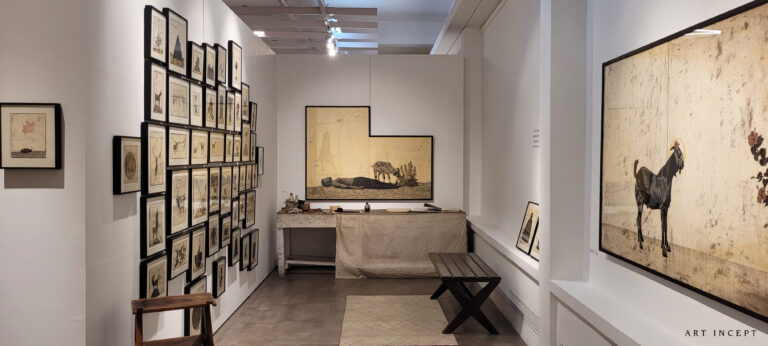
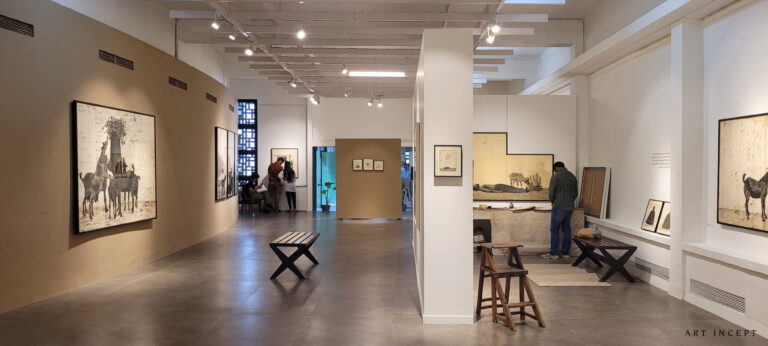
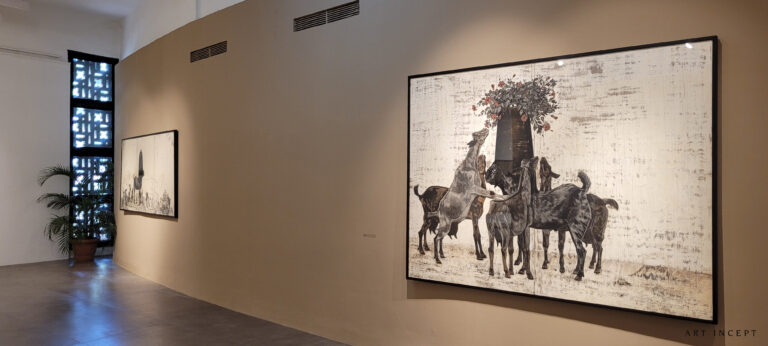



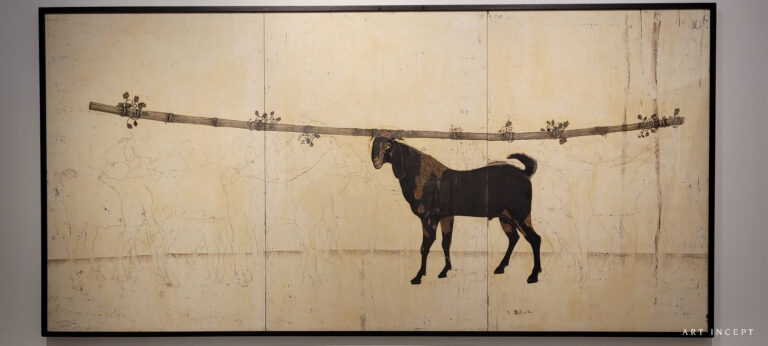
A solo show of Viswanath Kuttum, curated by Rahul Kumar.
Viswanath Kuttum tells stories without ending them. His paintings places imagery in unique context that is at once familiar and strange. He was born and grew up in the Andamans at a time when the island state was still pristine and untouched by changes in the name of development. While cellular technology had entered the lives of the locals, it had not taken over it. The everyday life, celebrations during festivals and weddings, rituals for death and birth, they all became his key references. He reminiscences them with nostalgia in his art.
Kuttum began to work at a local auto-repair shop at a young age. He needed to financially support his family, but he enjoyed the process of applying paint on repaired vehicles. He was also a keen participant in decorations at all the local festivities at his village. These activities proved to be the initial training ground for him for the arts. He candidly confesses having little interest in studies. This, combined with a deep passion for drawing and painting made his choice easier for a career as an artist. Kuttum migrated to mainland India for higher studies against all odds. Settling down in the city was daunting and exciting at the same time. It was only natural for the fast-paced life and the urban environment to have a deep impact on the impressionable mind. His early work began to respond to this new life around him, but deep within he yearned for the memories from his childhood. It was also his need to do something different. He found many of his contemporaries using the same point of reference in the art they produced. Politics and social structures of contemporary urban life played a significant role in his works then. However, he questioned what was truly his own, unique only to him. And this desire for ‘immediacy’ of inspiration took him back to his homeland.
His paintings are monochromatic with a pale, yet restful background, evoking a sense of warmth of the pleasant weather of his village. The minimalist and uncluttered works also refer to the unpolluted air he was used to. He began to create images of his homeland with enthusiasm to convey of its simplicity. The lifestyle may seem ‘backward’ but on closer inspection its magical qualities will reveal. The various rituals performed in his village are an ode to nature. One of the significant annual events involves a large-scale celebration with participation of friends and family alike. On the terrace of the house a clay pot with a rock is placed, filled with rice-grains and turmeric. The pot is closed with a red cloth and covered with a basket. This ensemble remains untouched for the entire year, after which all the old objects are put in the local lake and a new one is set up for the year to follow. This is accompanied with a customary dance performance by the men-folk of the house. Animal slaughter is an integral part of the culture. If the wishes come true, a goat is offered to the gods.
In his recent works, Kuttum interprets the silent moments between the ‘characters’ in his frame. The unspoken words between the performer and the animal, right before the act of slaughter; the unsaid emotions of the priest as he offers the hibiscus flower before performing the prayers; and even the imagined dialogue between man and plants before harvesting. He is interested in the in-betweenness and the transitional, one that is neither in the present nor in an imagined space. There are metaphors at play when he makes broken objects, like a tattered basket. Commonly used and an integral part of life in his village, the damaged basket symbolises the imperfection of life itself. Kuttum’s occasional painting involves a busy cluster of juxtaposed elements, quite contrary to the usual singular bold element. He has also experimented with an uneven silhouette of the canvas itself. These have a direct motivation from his own state of mind. A restless and emotionally heightened psyche has a direct impact on the format of his image making.
Songs from my homeland…a memoir of life and rituals is a celebration for Kuttum. He takes us to his village, on a guided tour, and makes us privy to his lived and imagined emotions. There are moments that are tranquil yet sombre, there are sentiments of contemplation.
Rahul Kumar
